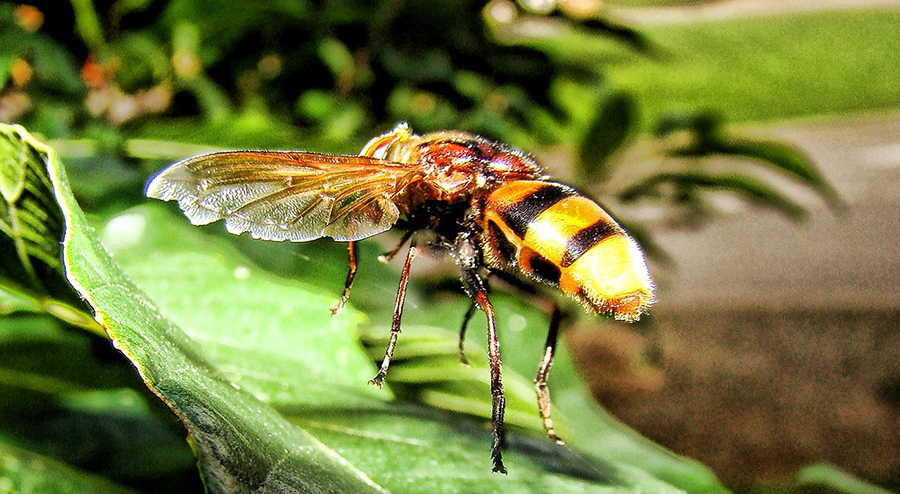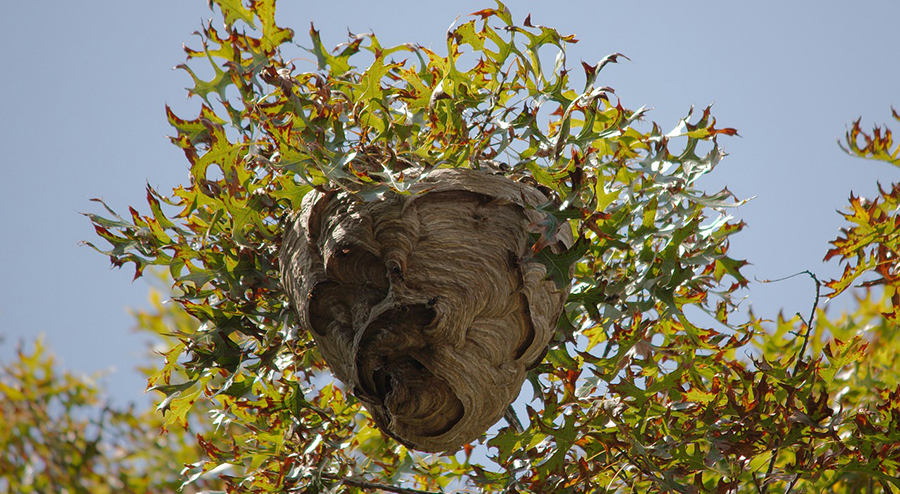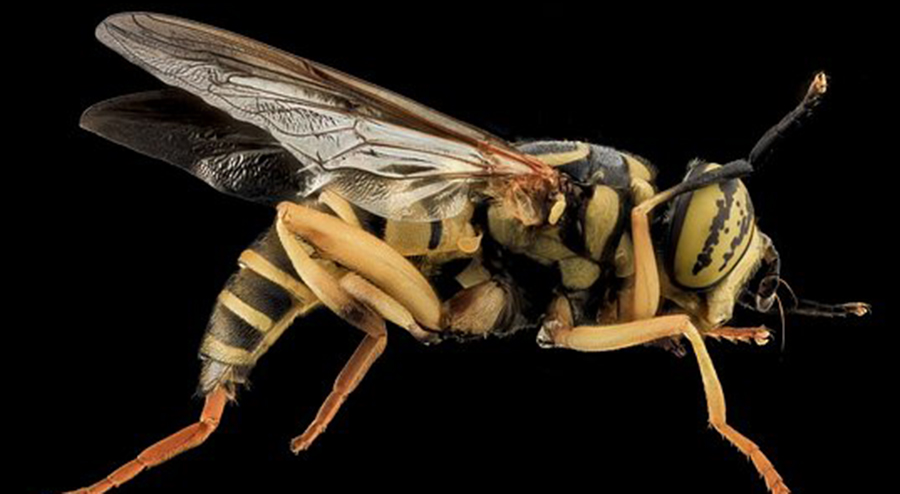How To Get Rid Of A Yellow Jacket Nest
There are many insects that we don’t like flying around the house like honey bees and hornets. However, there are very few pests that induce as much fear into the heart of any homeowner as yellow jackets. Distinctively marked by yellow and black stripes on their heads and thorax, yellow jackets are an aggressive and naturally protective insect. Not unlike honey bees, hornets, and wasps, these creatures hum, buzz, and sting indiscriminately.
Sometimes referred to as ‘meat bees’, these carnivorous insects are particularly active during the summer when they come out to interrupt picnicking families as they attempt to get at any sugary drinks and meat. The thing about these yellow jackets is that once you see one buzzing around in your backyard, then it is only a matter of time before an entire army of them shows up.
Getting rid of them is incredibly difficult and can be quite dangerous and requires pest control. The best course of action is to call an experienced pest management professional who can expertly identify their nest and exterminate them before they cause any kind of harm to you, your property and the family.
How to Know if You Have A Yellow Jacket Nest on Your Property
As is the case with most pest infestations, understanding exactly what it is you are dealing with is a good way to get started on the path to eradicating them. Have no doubt, getting rid of any yellow jacket nest will require pest control with some level of skill and expertise. The first thing you need to know with yellow jacket control is that, although a single yellow jacket sting may be a little irritating, it is not exactly dangerous to humans.
But, as we mentioned earlier, as soon as you see one yellow jacket, there is a good chance that an infestation is in the works. Multiple stings from these insects may cause some danger to people with bee sting allergies. That being said, going after a yellow jacket nest is by far one of the most dangerous ‘pest extermination’ exercises on which you could embark.
The worker yellow jackets around the nest will undoubtedly swarm and sting any intruder multiple times. Having this much venom injected in you is not only very painful but can also be dangerous to your health. Although yellow jackets prefer sugary food, as well as nectar from flowers, they have an adaptable palette that can include meat, garbage, and a whole list of picnic foods. For that reason, they tend to get attracted to human habitation because they can find sustenance from what we eat and throw away.
Where Can You Find Yellow Jacket Nests?
Yellow jackets often set up several colonies when they invade. They look for dark and secluded areas, such as the foundation of your home, walls, logs, or any other location that may provide them with shelter. They even make successful ground nests. As this tweet illustrates, they can even be nesting in your attic right above your head:
Heard a loud purring in my room, thought there was a raccoon in the attic…nope. 200 yellow jackets built a nest 20ft from my head
— yami (@jeemzmemez) September 28, 2017
The good news is that the nest will only be active for the duration of one summer for these insects hardly ever use the same nest through the seasons. During winter and fall, all except the queen die off. The queen will then fly off to start another colony. Although you could decide to wait them out, an entire summer is probably too long to risk your family’s health and comfort. So it is best to try and find the nest before things get out of hand.
For the most part, yellow jackets will nest in the ground somewhere in your yard. If you see lone worker yellow jackets around your garbage cans or buzzing around your flower beds, you can bet that there is a nest nearby and that you have an infestation on your hands.
How to Get Rid of Yellow Jacket Nests
This video gives you a good idea of how to try and identify yellow jacket nests on your property:
Here are some additional tips that will help:
Identify the entrance hole: When dealing with a yellow jacket nest on the ground, you need to start looking for increased yellow jacket activity. Once you see them starting to congregate on one spot that is not necessarily a part of their food source, you should watch from a distance to see where the insects enter the ground.
Wait until most of them are at home: Yellow jackets tend to be active during the day and come back to the next at night. If you are intent on doing something about the nest, this would be the best time to carry out your plans.
Get protective gear: Rest assured, you will be attacked as soon as you pose a threat to the nest. You will need to protect yourself from the stings. Wear thick gloves, safety goggles, a long-sleeved shirt and long, thick pants.
Use an insecticide at the entrance: Choose an insecticide that is labelled for use on yellow jackets and wasps. Some of the most potent ingredients that go into the most effective bug sprays are carbaryl and chlorpyrifos, so be on the lookout for those. For yellow jackets, you should consider using a dust insecticide as opposed to an aerosol insecticide. This is mostly because the dust covers the entrance entirely and slowly sifts into the different tunnels within the nest. Additionally, the worker wasps carry the dust further into the nest.
Wait and see then repeat: Once you have applied the insecticide, you should start seeing ‘drunk’ yellow jackets flying around. Wait until the erratic activities slow down and then repeat the process.
As mentioned earlier, this is a very risky endeavor and prudence dictates that you should leave it to the professionals. It is, therefore, our suggestion that you call a pest management professional as soon as you start seeing even a single yellow jacket buzzing around your property.
How To Prevent Yellow Jackets From Infesting Your Home
As is often the case with most pest infestations, the best way to keep yourself from having to deal with all this headache is to keep the infestation from occurring in the first place. When it comes to yellow jacket nests, there are some prevention tips that you can apply to your advantage:
Employ early intervention: Yellow jackets have the same habits and prefer the same types of locations for their nests. You should look at places such as any sheltered locations, such as under railings, logs, in your attic, and in the walls and overhangs. Once you have identified these potential locations, the best way to prevent yellow jackets from invading them is to swab or spray the different locations with mint, geranium, and rosemary or things like fresh cut herbs and citronella oil. You can also just knock down and step on tiny nests that haven’t developed into fully-fledged habitats.
Use yellow jacket traps: This is one of the safest ways to try and reduce the number of wasps in and around your property. By hanging these reusable traps, you can quickly reduce the number of worker wasps flying around the area.
Deny them food sources: Take time to cover trash cans, clean them, and store refuse in well-sealed containers. You should also keep pet food indoors.
Keep cracks and crevices sealed: These are all entryways through which these yellow jackets get into your home. Make sure that all vents, crevices, and cracks are sealed up.
Hang up a fake yellow jacket nest: These wasps are very territorial and will not build a nest where another colony already exists. Hanging up a fake nest tricks any yellow jacket queens looking for a new nesting ground that your yard is already taken and that they should move on.
You could also give your favorite pest management professional a call to help you come up with the best ways to yellow jacket-proof your home safely.
First Aid for Yellow Jacket Stings
We will start by saying that if you are allergic to bee stings, then you should consult with your physician as soon as you get stung by these wasps. That being said, here are other first aid and treatment options for yellow jacket stings:
- As soon as you get stung, you should try to remove the venom by washing the site with soapy water.
- Try to ease pain and reduce the swelling by applying ice in a damp cloth to the site.
- If the pain is too much, consider taking some ibuprofen or Benadryl to relieve it.
- If you are stung in the throat or mouth, do not try to treat it yourself. Swellings in these locations can cause suffocation. Seek medical attention immediately.
- If you experience any kind of dizziness, fainting, or trouble breathing contact your physician immediately.
Do not take any kind of wasp sting lightly. Keep a keen eye on your condition and call a physician as soon as you begin to feel any kind of alarm. Yellow jackets are definitely not the most ideal guests to have during those beautiful summer months. That is why it is important to call your favorite pest management professional to help you deal with the whole infestation. Do not risk getting swarmed and stung. Give us a call today and let us get rid of that yellow jacket nest before everything gets out of hand.
Sources:
https://en.wikipedia.org/wiki/Yellowjacket
https://www.doityourself.com/stry/all-natural-pest-control
https://www.techletter.com/Archive/Technical%20Articles/yellowjackettracking.html


